..nORTH sNIPE sAIL tEST.. iN kAMAKURA..
SAIL TESTING IN KAMAKURA, JAPAN
Report by Snipe expert Brian Bissell and North One Design Designer Garth Reynolds
 We recently completed a week-long Snipe sail testing session with North Sails Japan. The goals for the trip were two-fold. First, pit our AP5+/BR1DH against the Japanese counterparts the PR2 and SW3 mainsails and the R2-LM jib; second, to learn how to build, use and analyze NS Japan’s “America’s Cup” style Two Boat Testing System. The following report combines our individual perspectives of the week, a brief analysis of the sails, and an explanation of system functions and advantages it will provide to North Sails One Design.
We recently completed a week-long Snipe sail testing session with North Sails Japan. The goals for the trip were two-fold. First, pit our AP5+/BR1DH against the Japanese counterparts the PR2 and SW3 mainsails and the R2-LM jib; second, to learn how to build, use and analyze NS Japan’s “America’s Cup” style Two Boat Testing System. The following report combines our individual perspectives of the week, a brief analysis of the sails, and an explanation of system functions and advantages it will provide to North Sails One Design.
Upon arriving in Tokyo, Garth and I were immediately inspected by quarantine officers to make sure we weren’t bringing in any diseases. They take this very seriously. I believe they escorted one guy off the plane because he started coughing. If you pass their series of questions, you get a facemask and a yellow card that I think said something like “disease-free”. So much for first impressions!
 After getting through customs and finding our bags and box of snipe sails, we rented a cell phone and hopped on a bus for Yokohama where we were met by Takumi. Takumi is a sales rep for NS Japan and will be representing Japan and North Sails at the Snipe World Championship this year. He drove us to Kamakura which is a small beach town that used to be the capital of Japan 750 years ago. Untouched by the war, there were some really old temples and big Buddha statues everywhere you looked. This 13.3 meter-tall, 93 ton cast bronze Buddha sculpture is the second largest in Japan, and was cast in 1252!
After getting through customs and finding our bags and box of snipe sails, we rented a cell phone and hopped on a bus for Yokohama where we were met by Takumi. Takumi is a sales rep for NS Japan and will be representing Japan and North Sails at the Snipe World Championship this year. He drove us to Kamakura which is a small beach town that used to be the capital of Japan 750 years ago. Untouched by the war, there were some really old temples and big Buddha statues everywhere you looked. This 13.3 meter-tall, 93 ton cast bronze Buddha sculpture is the second largest in Japan, and was cast in 1252!
Getting down to business, Garth was in charge of learning the NS Japan Two-Boat Testing Program, while I was responsible for getting our AP-5+ main and BR1DH jib set-up and tuned right to test against the Japanese quiver of sails. What was to happen in the next 5 days was mind blowing. Definitely the coolest, most educational sail test I’ve ever been a part of.
Garth’s TECHNICAL NOTE: The basic principle of the Japanese two-boat testing system is:
- Track two boats while sailing with GPS to tell which boat is going faster and/or pointing higher.
- Include wind data from a masthead system onboard the coach boat. The coach boat is also equipped with a heading sensor and a GPS.
- Determine the TWA, TWS, AWA, and AWS on the two test boats (in relation to the coach boat. Not a perfect scenario of having wind data on EACH test boat…but more sophisticated than anything done previously for small boats.
- Utilize mast-head cameras on each boat to take one photo-per-second.
- Compile all of the data (test-boat track/speed, wind data, photos) on-board in a CPU, and display the data in REAL TIME!
This is a simple principle with a complex solution utilizing five different programs developed by NS Japan to give the coach boat operators the real time view.

Photo: Upwind testing in progress. LEFT: System engineer and Team NZL engineer, Masanobu Katori. DRIVING: Makoto Kikuchi. FORWARD: Extra crew.
Imagine coming in from a long day of sail testing. You’ve just sailed 8 one-mile-long upwind beats and 8 downwind legs the same distance. The boat felt really good at times, average part of the time, and a bit sticky in some areas. In a normal sail test, the variables would be eating at me. Was I higher and faster that one time because of my technique, was I trimmed a little tighter, was I hiking harder? Is it just a matter of different sail designs? In a normal sail test, that would forever be unknown.
Garth’s TECHNICAL NOTE: We conducted the sail test as one would without the GPS tracking tools. If the boat to leeward felt they could tack and cross, they were allowed to do so. If the windward boat fell into the leeward boat, the windward boat would tack and we would reset. We also switched windward-leeward positions, which gave us a clear understanding that the AP5+ was a “pointing sail” with less twist and more leech return in the bottom, and the PR2 was a “fast forward sail” with more twist, less leech return, and more shape in the top of the sail. The Two-Boat Testing System was not needed to see these trends; however the system provides a quantitative and objective view of the testing. After each sailing session, the data can be broken into segments, analyzed and “scored”. Test runs are evaluated with “Advanced Performance Analyzer” and scored with a “gain rate” of [meters-per-minute]. Another advantage to using the system, is that each one-minute run starts the boats at an even position, and calculates the gain at the end of the run; nearly eliminating the need for a perfect line up for each run. This helps streamline the testing, and allows for more efficient use of the time on-the-water.
At the end of each day, in our debrief sessions, we would pick apart each upwind leg. The two boats’ GPS tracks show up on the screen in seemingly parallel lines; one in red, one in blue. Looking closer, you can see the lines aren’t exactly parallel and at times one boat may have been going higher and faster, higher and slower, lower and faster, or lower and slower. To get an accurate account, the one-mile beats were sliced into one-minute long segments (usually covering 250-meters).
Let’s say for instance, in the one minute test section of sailing upwind, my boat made big gains. I sailed higher and faster. The first thing we would do is look at the wind strength and direction. Were we in a puff? Were we lifted? If the gains were caused by a wind shift, it can be noted and marked as a “gain due to wind shift”. Next, we’d take a look at the bird’s-eye-view of the two boats sailing upwind. This is where you can see the difference in technique. Who’s hiking harder? Who is steering the boat more aggressively through the waves? Were the sails eased the same amount in the puff? Finally, we use “Advanced Sail Analyzer” a software developed by NS Japan, to analyze both sail shapes (draft position, camber, exit and entry angles, twist).
Garth’s TECHNICAL NOTE: Advanced Sail Analyzer takes “sail scan” to a new level. Masthead photos along with photos taken from the chase boat are synced using a timestamp, so when a photo is taken from aft of the test boat, it can be matched to the corresponding masthead photo. See following example.

Simultaneous photos from aft and from masthead

Advance Sail Analyzer
The final step in comparing the flying shapes is to convert the ASA-measured photos into an IGS file, providing a 3D “wire frame” view. These IGS files may be viewed in an overlay so the similarities and differences are shown in a natural “boom up” view as the skipper and crew would see the sails. The 3D IGS viewer can display the sail(s) from any angle, similar to Spiral. The 3D view below is an overlay comparison of the same photos.
 Lastly, the IGS file of the flying shape may be input directly into Membrain, allowing the designers to compare the measured flying shape (from sailing) to the theoretical flying shape determined from the CFD/FEA tools Flow and Membrain.
Lastly, the IGS file of the flying shape may be input directly into Membrain, allowing the designers to compare the measured flying shape (from sailing) to the theoretical flying shape determined from the CFD/FEA tools Flow and Membrain.
At different times in the day, one boat might try something new. I’d tell Garth, “Hey, I’m going to add a little more jib halyard tension, or I just dropped shroud pins ½ hole, or I am going to try a little mast ram forward. He would mark the time of day and note what change was made. Then at the end of the day we could check how those changes affected performance and what affect they had on 1) sail shape and 2) performance. Again, removing the subjectivity from the equation!
I have always debated vang sheeting vs. traveler sheeting in the Snipe. The Japanese swear by traveler sheeting and I am a little more comfortable vang sheeting. It was really interesting to see how the sails reacted differently to both variations. Overall, vang sheeting was favorable in an offshore, shifty and gusty breeze condition with a high variance in the gusts and lulls. In this condition, traveler sheeting did not allow one to ease/trim the mainsheet fast enough to keep up as the breeze changed. Traveler sheeting was favorable in a steadier, onshore breeze condition as the transitions from gust-to-lull were smoother.
What an amazing experience!
-pix&txt courtesy of northsailsod.com-

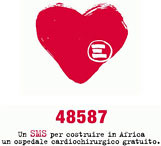


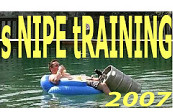

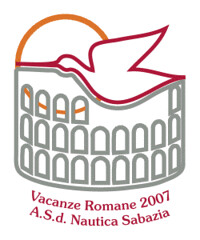

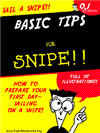
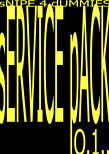


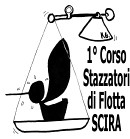
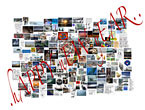








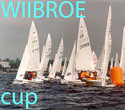













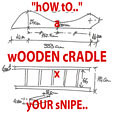



0 Comments:
Post a Comment
<< Home